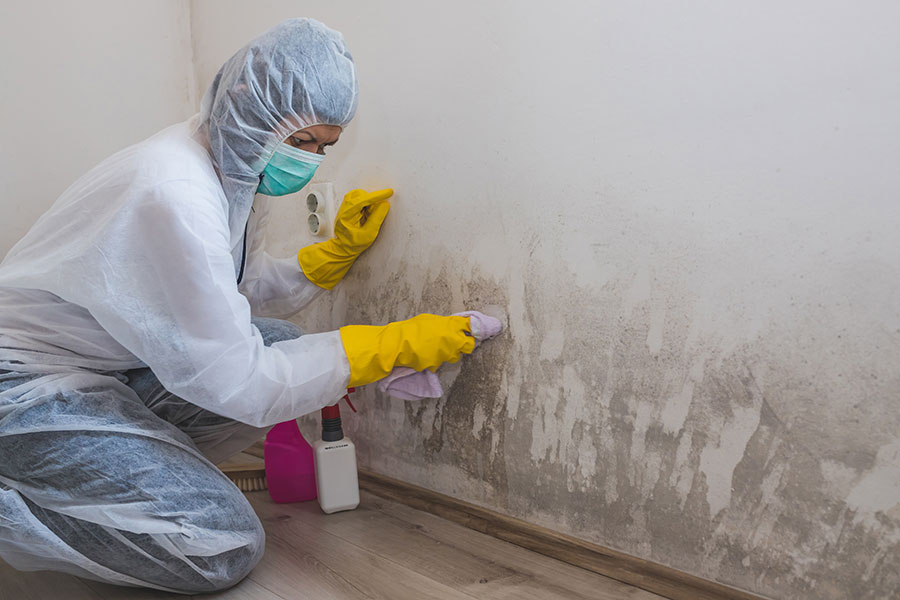Mold removal and mold remediation are sometimes used interchangeably, but these two terms are significantly different. Many restoration companies promise the complete removal of mold from your property, but this achievement is an impossible feat. It is advisable to hire mold technicians who appreciate the nature and causes of mold. With mold remediation, a reputable restoration company will determine the cause of your mold problem and reduce the mold levels to harmless, natural levels.

What is Mold?
If you have a mold problem, your best bet is a restoration company that understands mold properties. Mold is a fungus that flourishes on moisture, and this affinity for water is why you are most likely to see it in damp places like bathrooms and kitchens.
It is essential to call professionals to look for all sources of moisture in your home. For example, the mold could have spread to a room’s drywall, in which case you need to cut the affected parts and add fresh drywall.
Mold exists indoors and outdoors, and it can enter your home through doorways, HVAC systems, and windows. Pets can also bring the fungi into the house, or the mold can attach itself to shoes and clothing. Once inside your home, the mold spores will quickly grow if they land on a damp surface. The common causes of mold in homes include:
- Persistent humidity in a poorly-ventilated home
- Leaky pipes
- Leaking ceiling
- Cracks in foundation
- Flooded basement
- Damp clothing
- Damp shower curtains and bathroom doors
Understanding Mold Removal
Total mold removal is not possible as mold exists everywhere as spores. The spores will remain dormant if there is no moisture, but they will quickly grow if their living area becomes damp. However, mold removal is an essential step in the more comprehensive remediation process, where an expert restoration company will reduce the mold levels to more natural levels.
The Mold Remediation Process
Mold remediation is a more thorough approach towards dealing with mold. Experts will identify the mold’s source, contain it, and perform treatments like cleaning and demolitions. A reliable restoration company will also implement preventative measures to discourage future mold growth. These steps are explained below:
- Inspection
The first thing step when tackling a mold problem is to call an experienced restoration company. The professionals will thoroughly inspect your home and determine the contamination levels. They need to determine the contamination’s extent to figure out the best approach towards removal and clean up.
The restoration company also needs to identify the source of the moisture to avoid mold re-growth. Mold removal technicians will check your bathroom, kitchen, attic, and basement for leaky plumbing or cracks.
- Containment
Homeowners are discouraged from dealing with extensive mold contamination on their own because of the health risks involved. However, you can facilitate the process by fixing the water problem that encouraged mold growth. You can also clear the path for the mold removal crew and remove any cars in the garage and driveway. Keep pets away from the working area.
The restoration company will park their vehicles as close as they can to your house. The staff will suit up in their protective clothing and lay plastic sheeting from your doorway to the contaminated area.
The team will use a hose to spray the contaminated area with biocide, which is approved by the FDA for killing mold spores. The biocide is left to work overnight. The crew will return the next day to spray an encapsulant to enclose any remaining mold spores. Experienced mold technicians will spray beyond the contamination area to discourage future mold re-growth.
- Air Filtration and Clean Up
The crew will use powerful air filters to remove any mold spores from your home’s HVAC unit. If your home’s moisture levels are excessive, dehumidifiers will come in handy during the drying process.
A reputable restoration company will also be equipped with HEPA-filtered vacuums to remove any surface mold on building materials. The technicians will remove any damp, contaminated, and porous materials and scrub all moldy surfaces. They will use anti-microbial disinfectants and sanitizers to remove any remaining mold. It may also be necessary to demolish and remove parts of the affected area.
Clothing, furniture, blinds, curtains, and other materials near the contaminated area will need to be cleaned. The final step involves the use of an efficient HEPA vacuum to remove any residual spores.
- Restoration
You can do a visibility check to ensure your home is free from dirt and debris before putting back your house together. Cleaned items should be left to dry completely to avoid re-introducing moisture.
The company will perform a follow-up inspection to ensure that the remediation was successful. You should also ensure that the moisture problem has been sorted to discourage mold re-colonization.
If done correctly, the above steps will make your home hospitable again by drastically reducing mold levels. The remediation process will be more successful if done by a restoration company with specialized equipment and knowledge



